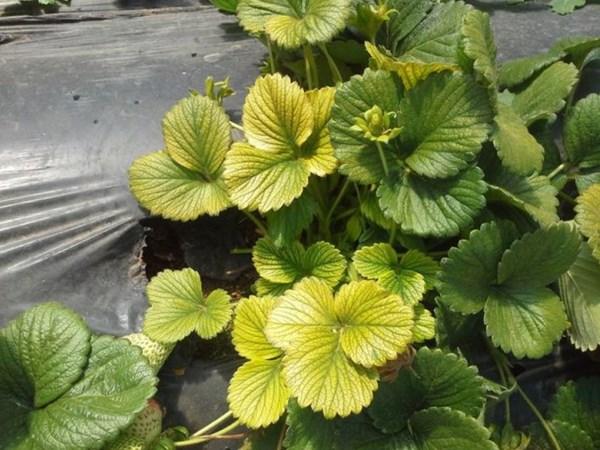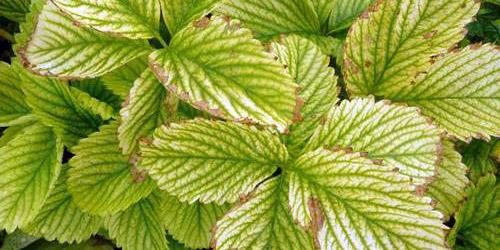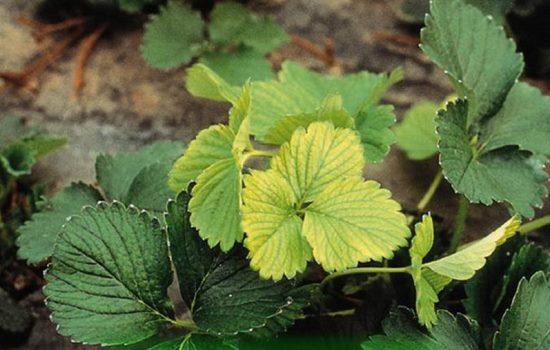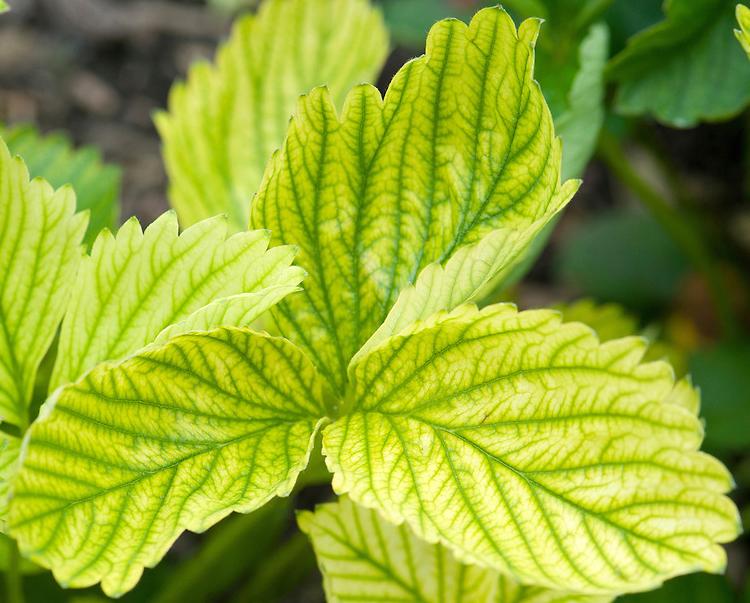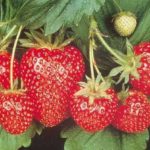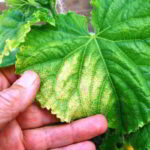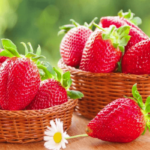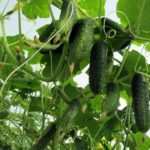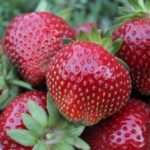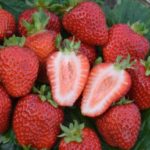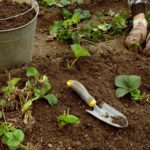Gardeners who grow berries in the garden often encounter strawberry leaves turning yellow. It is recommended to immediately determine the causes of such a problem and understand methods for eliminating it.
- Possible reasons why leaves turn yellow
- The landing site was chosen incorrectly
- Insufficient soil moisture
- Deficiency of plant nutrients
- Magnesium deficiency
- Nitrogen deficiency
- Boron deficiency
- Iron deficiency
- Chlorosis and pests
- What to do if strawberry leaves turn yellow
- How to prevent strawberry leaves from turning yellow
- Conclusion
Possible reasons why leaves turn yellow
There are several reasons why yellowness may appear on the surface of leaf plates.
The landing site was chosen incorrectly
The main reason for the appearance of yellow spots on strawberry leaves is considered to be an incorrectly selected place for planting the berries. Gardeners do not recommend growing them in open areas, as the sun's rays can burn the surface of the foliage. It is recommended to plant them in shaded areas that receive little sunlight.
Berries should be grown away from raspberry bushes and tulips. These plants can infect strawberry seedlings with infectious diseases. In addition, when choosing a place to plant berries, pay attention to the acidity level of the soil. Acidic soils contribute to yellowing of stems and leaf blades.
Insufficient soil moisture
In summer, yellowness on the foliage appears due to lack of moisture and improper watering of seedlings.
If you water the strawberry too rarely, it will begin to absorb nutritional components worse, causing the color of the leaf plate to change.
However, this does not mean that the plant should be frequently filled with water. Too frequent watering leads to the fact that the moisture in the soil begins to stagnate. Because of this, plants develop gray rot and other fungal pathologies.
Experts recommend watering in the morning and evening, when there is no sun.
Deficiency of plant nutrients
Among the common causes of yellowing strawberry bushes is a lack of nutritional components.
Magnesium deficiency
Magnesium is one of the most important components that are needed for normal strawberry growth. It is responsible for the basic enzymatic processes of plants. Due to a deficiency of this microelement, the absorption of phosphorus elements is impaired and protein synthesis is suspended.
The main signs of magnesium deficiency in the soil include:
- The appearance of light spots between the leaf veins.Gradually, light spotting spreads over the entire surface of the foliage, after which it dries out.
- Falling leaves. All yellowed and dried leaves curl and fall off.
- Deformation of shoots. The lower part of the shoots becomes thinner and begins to bend.
Nitrogen deficiency
In order for the plant to grow normally, it is recommended to regularly add nitrogen-containing fertilizers to the soil. If the strawberry does not have enough nitrogen, the bushes will stop growing. The surface of the leaves and stems begins to turn yellow and become stained. Nitrogen deficiency also negatively affects berry yield. The fruits turn pale and stop ripening, some of them fall off. Without timely treatment and nitrogen fertilizing, the bushes will die.
Boron deficiency
Experts recommend feeding strawberries with boron so that they do not suffer from bacterial and viral diseases. Seedlings also need this element for the development of stems and ripening of berries.
Most often, boron deficiency is observed when berries are grown in acidic or carbonate soils.
A deficiency of the component is indicated by curling of young leaves and spotting on the leaf blade. Signs of boron starvation appear on the stems located in the upper part of the bushes. They turn yellow and gradually fade. In addition, all formed fruits stop ripening and begin to fall off.
Iron deficiency
Iron is considered an essential element, since it is responsible for photosynthesis. If you do not add iron-containing fertilizers to the soil, the development of strawberries will slow down. Light yellow spots will appear between the veins, which will then completely cover the surface of the leaf plate. Signs of iron deficiency first appear on older foliage.Gradually, the spotting spreads to younger shoots.
Most often, gardeners encounter iron deficiency when growing strawberries in highly acidic soil.
Chlorosis and pests
Chlorosis is one of the most common diseases, due to which the foliage turns yellow. Pathology develops due to an increased amount of lime in the soil. Signs of chlorosis appear on the lower shoots of strawberries. First, the foliage turns yellow and becomes deformed. Without treatment, the leaves will fall off and the infected bushes will die.
In spring, plants are attacked by dangerous pests that feed on the sap from the bushes. The most dangerous and common insects include:
- ticks;
- midges;
- aphids;
- pennits;
- May beetles.
If there are insects on the surface of the leaves, the bushes are immediately sprayed with fungicidal mixtures and other preparations against pests.
What to do if strawberry leaves turn yellow
Some gardeners don't know what to do when strawberry leaves turn yellow. There are several effective ways to eliminate yellowness on foliage:
- Mulching. If yellowness appears due to the development of a fungal disease, it is necessary to mulch the soil. The soil is mulched with non-woven black materials. You can also use straw as mulch.
- Bordeaux mixture. This solution is used at least three times per season. Spraying is done in the evening.
- Wood ash. Experienced gardeners advise using wood ash if there is a lack of nitrogen fertilizers. 80-100 grams of ash are poured under each bush.
- Copper sulfate. You need to mix 250 grams of vitriol with 7-10 liters of water and 150 grams of lime. During spraying, 500-800 milliliters of the mixture are consumed for each seedling.
How to prevent strawberry leaves from turning yellow
There are several preventive measures that will help prevent the appearance of yellow spots on foliage:
- Proper watering. Moisten the soil at least twice a week. At the same time, 5-6 liters of water are consumed for each bush.
- Feeding. It's no secret that yellowness can appear due to nutritional deficiencies. To ensure that the bushes always have enough fertilizer, they are periodically fertilized with organic and mineral compounds.
- Fungicide treatment. To prevent pest attacks and the appearance of diseases, all strawberry bushes should be treated with fungicides 1-2 times a month.
Conclusion
Gardeners often complain about deteriorating yields due to yellowing and wilting of strawberries. To avoid the appearance of yellowness, you need to understand the causes of spotting and the basic methods of treatment and prevention.

